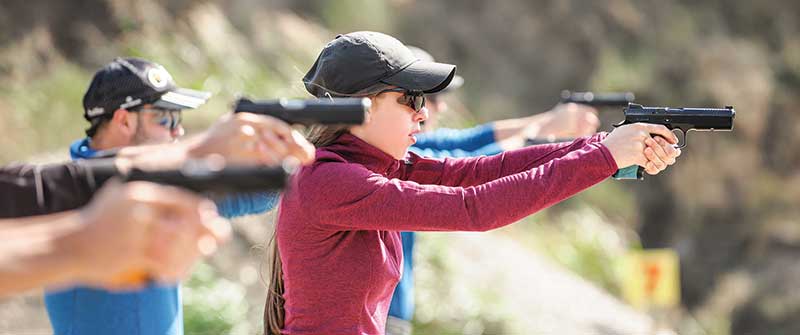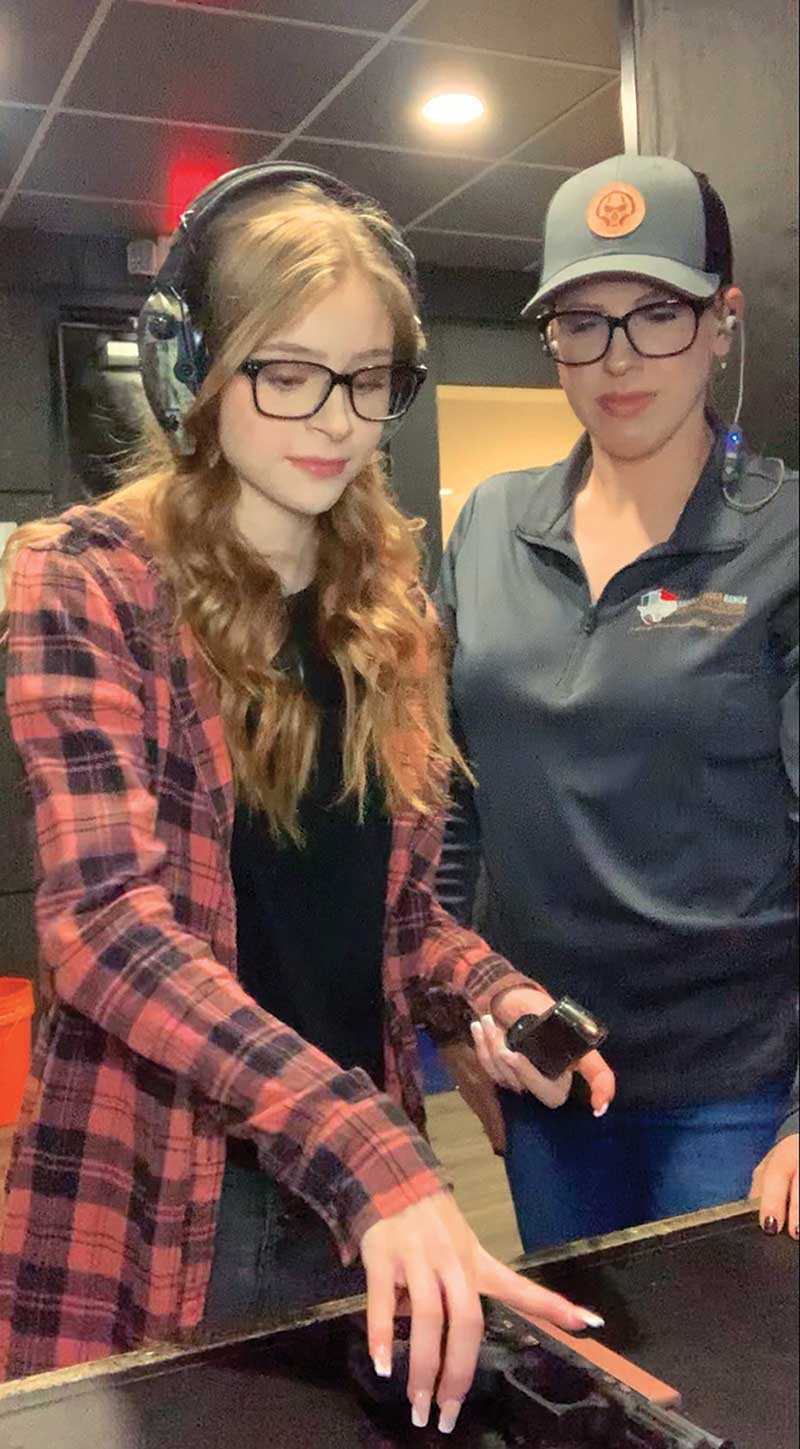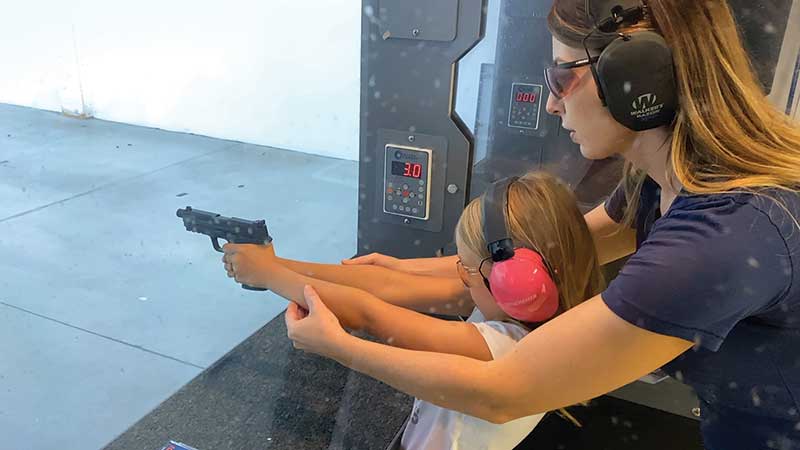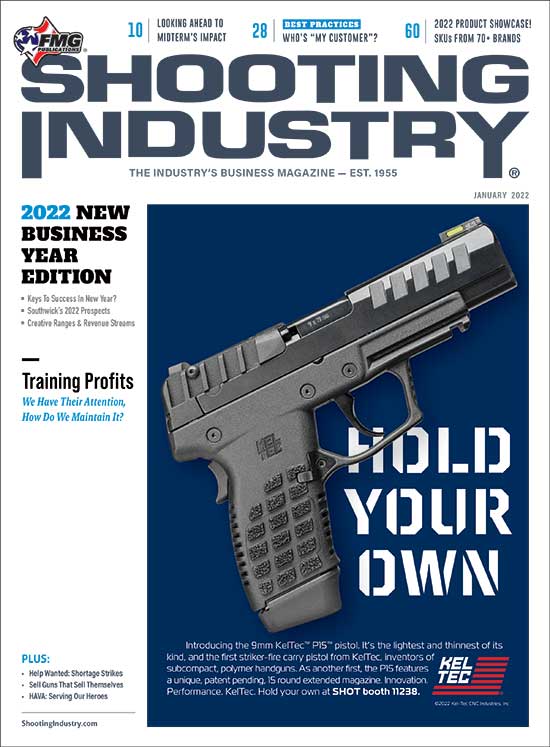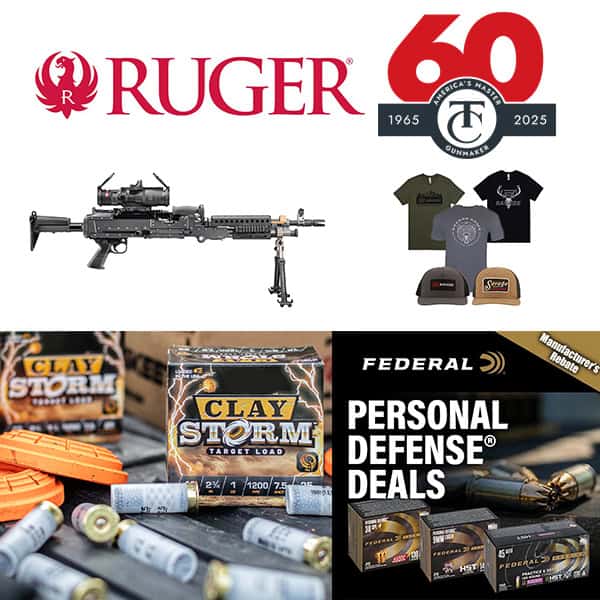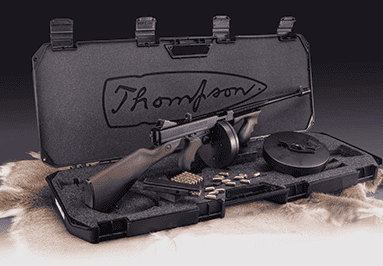Training Profits
We Have Their Attention,
How Do We Maintain It?
In the past two years, we’ve all experienced one of the most intense and prolonged buying frenzies ever. We gained millions of new gun owners, but as things start to slow down some, what are firearms instructors doing to keep new and current gun owners occupied?
We’re starting to see more ammo on shelves and prices are coming down a bit, but it’s still not as affordable and available as it once was, preventing many shooters from taking more classes.
What are instructors doing to serve seasoned shooters? Most of the instructors I know, including myself, have been working overtime to cater to new shooters, filling our calendars with entry-level classes. This leaves many of our old clients in the dark.
If we do offer intermediate classes, they need to provide great value to justify the cost of ammo and/or include a curriculum with less ammo required. We no longer live in an age where we can require students to bring hundreds of rounds for a one-day course.
Cutting Expenses
The price of ammunition is limiting training enrollment for all classes. It’s a big cost everyone knows is there and makes customers reluctant to use what ammunition they may have or “bite the bullet” and pay inflated costs. So what can we do? An alternative to keeping classes full is to lower the cost on other expenses.
Tara Britekrite, an instructor and manager of Saddle River Range in Conroe, Texas, said, “When the ammunition shortage was at its peak, I implemented a discounted rate for training to compensate for the increase in ammo costs and lack thereof. Thankfully the store was able to consistently keep pistol calibers in stock at a relatively reasonable price considering the drastic rise in store cost.”
This might seem like you’re taking a large cut, but it’ll encourage more students to enroll, leveling out the loss in costs.
“Most of the instructors I know, including myself, have been working overtime to cater to new shooters, filling our calendars with entry-level classes. This leaves many of our old clients in the dark.“
Teaching Families
One of the most frequently overlooked groups with a need for training I see with a lot of the new gun owners is the children in their homes. In most cases, a parent has seen the need to be able to defend their family and has wisely purchased a firearm and sought training. These people are brand-new to guns and still very much students. Rarely will they teach basic gun safety to their children, as they don’t feel qualified. This opens the door to the perfect class many instructors aren’t offering.
You can add a child firearms safety class or do what I’m doing and offer a class designed to teach the principles of firearms safety to parents and kids together in a safe and easy environment. Depending on the age level, shooting does not have to be part of this class, eliminating the issue of ammo. Additionally, by teaching this class, you add another gun enthusiast to the world.
Britekrite took child firearms safety to the next level at her range.
“Something different I implemented for the Saddle River Range location as incoming manager was Fathers’ Day. We already had Ladies’ Day and Date Night, but I thought it was also important for fathers to have a day where they could receive a discounted rate when bringing their children to the range. Firearms familiarity and continued practice is very important for children as well as adults.”
If you don’t own a range, this can easily be implemented as a class geared toward children who are old enough — and mature enough — to shoot. Offer one-hour, instructor-advised sessions in small groups.
Classes With No Range Required
Britekrite has also added educational classes that don’t include range time, such as a constitutional carry course that covers relevant laws, use-of-force decision-making and next steps to take. Saddle River Range works closely with USCCA, which also offers their legal seminars. These seminars are often taught by lawyers or law enforcement professionals to give students the best possible advice on owning a gun and the laws involved to ensure they’re not putting themselves or others in legal danger.
If this is something you’d like to implement at your facility, reach out to USCCA for more information. They offer a Victim Proofing women’s course that discusses a plan for action so they’re less likely to become victims. All of these classes are available for less than $25, which keeps students engaged and coming back for more training.
I’ve mentioned dry-firing systems in previous articles — such as the MantisX, Strikeman, CoolFire Trainer and even airguns — but one thing you might want to consider adding is a virtual reality trainer. I recently installed one in my classroom from Point Blank Simulator. With a computer, camera and HD projector, you can turn a laser trainer into a much more immersive training experience for students. The system can even make use of the Microsoft Xbox Kinect to track the user’s movement for a more dynamic experience. This allows a number of training scenarios with safe dry-fire that include shooting from behind cover, and it continually adjusts the view based on the position of the user.
This kind of technology enables teaching a lot of defensive scenarios you usually can’t on most ranges. Force-on-force simulators are a great training opportunity a lot of people don’t get to experience and it’s incredibly valuable for beginners and experienced shooters alike.
“New technologies are helping to improve the dry-fire experience, allowing us to conduct training scenarios most of us couldn’t before.“
Add Value
For students with experience, they need to sharpen their skills. Dry-firing systems are great, but nothing can replace the experience of live-fire. As instructors, we need to add value to our classes to bring more than just having students mag dump. We need to conduct the classes in ways that conserve ammo and teach them how to continue improving with fewer rounds expended.
This year, one of my assistant instructors at Elite Firearms & Training, Ron Carter, added a course called Speed & Accuracy. In the class, he covers how to diagnose shooting, build muscle memory of fundamentals and the ability to call a shot without seeing it. We rely on lots of dry-fire practice to teach the methods and a student only needs 50 rounds for the class. At the end, each student completes the class with a 10-10-10 drill. Obviously, it will be up to the student to continue practicing to fully build solid muscle memory, but the methods we introduce help them make their shooting practice much more efficient and affordable.
Other opportunities for seasoned shooters include incorporating movement and reloads in shoot-and-move-style classes. I’ve done force-on-force classes before with BB guns. This is a great way to teach students concealment and cover, and shoot and don’t shoot scenarios. Unfortunately, most people who complete a concealed carry course don’t know anything beyond a static shooting position at a firing line. It’s up to us as instructors to teach them how to respond in an active shooter situation. Also, if you’ve ever been hit with a BB before, you know it adds just enough pain for students to make it their mission not to get hit and to take things seriously.
Stay Creative
As we face challenges, we need to stay creative and keep engaging with our students. New technologies are helping to improve the dry-fire experience, allowing us to conduct training scenarios most of us couldn’t before.
With small investments in time or new technologies, we can all continue to expand our training programs to meet the needs of new shooters and provide new courses to experienced shooters during these times.
Ava Flanell is the owner of Elite Firearms & Training in Colorado Springs, Colo.

